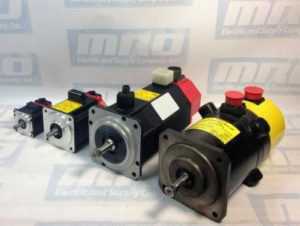Today we will be helping you with your installation of a spindle motor. Alarms are caused by tensions issues with the belt – either being too tight or too loose in relation to the sensor. MRO Electric and Supply offers both new and refurbished FANUC Spindle amps, troubleshooting on our blog for a wide variety of parts, and repair services on any product we offer.
Steps for fixing the sensor gap
- Disconnect the wiring inside of the terminal box.
- Next take out the 4 bolts that hold the shroud/fan to the motor.
- Remove the screws from the cover of the sensor on the motor.
- Loosen the screws holding the sensor in place until you have enough room to be able to slide a piece of paper between the gear and sensor.
- Tighten the 2 screws that hold the sensor in place to make sure they do not rub against each other at all.
- Fasten the sensor cover back to the sensor and tighten accordingly.
- Reattach the shroud and the fan to the motor.
- Configure the wiring back to what it was originally.

Now that the sensor for your FANUC Spindle amp is corrected, it should work properly. If you are still having issues we recommend looking throughout our blog as we have many articles based on helping the user troubleshoot any and all issues with their motor.
Sometimes you may not have the necessary equipment to make a diagnosis on your motor, but we do. MRO Electric and Supply offers high quality repair services on all motors so you don’t have to worry about it. Please take a look at our website to see all available brands and parts we can service for you.
MRO Electric and Supply has new and refurbished FANUC CNC parts available. For more information, please call 800-691-8511 or email sales@mroelectric.com.
Updated on March 5, 2020 by Brian Hughes